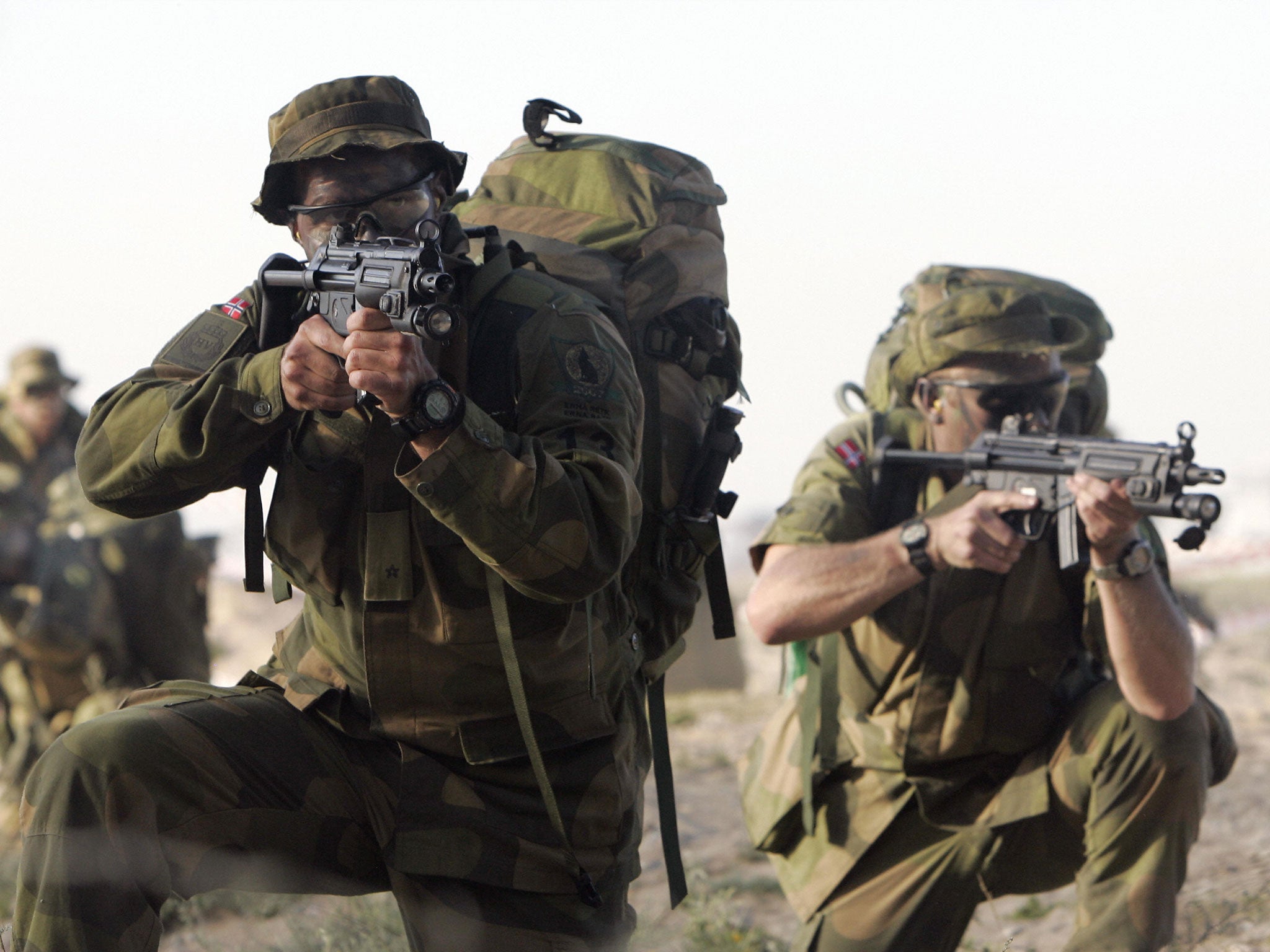Norway sends hundreds of troops to Russian border region as Cold War surveillance pact is revived
Scandinavian country describes move as 'historic'

Norway is deploying hundreds more troops to the remote region of Finnmark, bordering Russia, as part of a plan to expand defences within the Arctic Circle.
The bolstered military presence in the far north of the country comes as the UK, US and Norway begin to revive a Cold War-era pact to monitor Moscow’s activities in the North, Norwegian and Barents seas.
The deployment is part of a plan approved by the Norwegian government late last year to significantly increase defence spending.
Describing the move as “historic”, the political adviser to Norwegian Defence Minister Ine Marie Eriksen Søreide said Norway would “further increase our land forces in the northernmost county, Finnmark, by establishing a new company sized ranger unit at the Norwegian-Russian border” of around 200 troops.
Audun Halvorsen told The Independent that providing a deterrent in Finnmark, which shares a remote land border with Russia, “continues to be high on the agenda of the Norwegian government”.
“We do not consider Russia a direct military threat to Norway today," he said.
“But we pay close attention to the Russian military activity in the High North.”
The deployment comes as Norway looks to revive a Cold War surveillance pact covering international waters stretching from the Arctic Circle to the UK.
Oslo and London are buying new maritime surveillance aircraft – five and nine new Boeing P-8 Poseidon maritime surveillance aircraft respectively – in a deal that British Defence Secretary Michael Fallon said would allow the UK to “step up cooperation with Norway on maritime patrol”.
A decade ago the Pentagon announced it was withdrawing from an Icelandic air base used to house its P-3 aircraft.
Joint maritime surveillance efforts were further harmed when the UK scrapped its equivalent to the P-3 – the Nimrod – in 2010.
But Magnus Nordenman, director of think tank the Atlantic Council’s Transatlantic Security Initiative, said a surveillance “triangle” operated by the US, UK and Norway was being brought back.
He told Defense News: “During the Cold War there was this triangle between the US flying missions out of Keflavik, the Brits flying out of Scotland and the Norwegians flying P-3s out of Andoya.
“That triangle that existed in the Cold War is coming back.”
Questioned on the revived surveillance pact, Mr Halvorsen said: “The procurement of new maritime surveillance aircraft is necessary to enable the continuation of monitoring of Norwegian and adjacent waters.
“Norway´s old P-3 aircraft are approaching the end of their lifespan.
“The surveillance of the North Atlantic has traditionally been subject to close cooperation with the US and UK.
“The cooperation will be strengthened by the fact that all three countries will operate the same aircraft.”
In a separate development on Monday, 300 US Marines landed in Norway for a six-month deployment, the first time since the Second World War that foreign troops have been allowed to be stationed there.
American soldiers will remain in Norway for a year, with a second batch of Marines replacing the first deployment in six months time.
Mr Halvorsen said training missions undertaken by Nato allies would be increasing in future.

The senior Norwegian official added: “The long term plan also underlines the importance of further allied participation in training and exercises in Norway, especially in the North.
“We consider such activities as an important part of Nato’s collective defence, demonstrating allied solidarity and providing useful experience in operating in the northern region of the alliance.
“We are improving our ability to receive allied forces, and we will train and exercise together with them more frequently when they are in Norway.
“US and UK are both key allies, and we maintain longstanding and close relationships; allied training in Norway is increasing.”
Join our commenting forum
Join thought-provoking conversations, follow other Independent readers and see their replies
0Comments